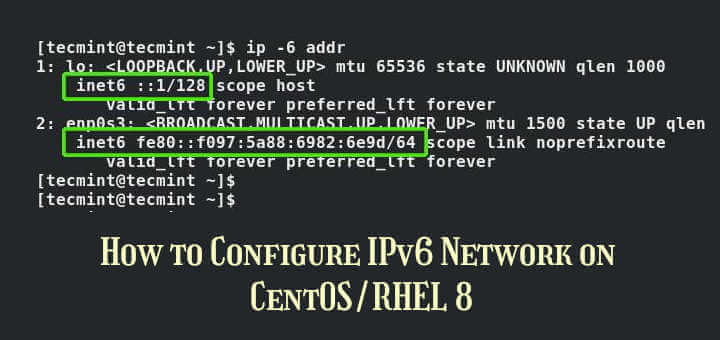
- #Centos 7 static ip and interface up on boot install
- #Centos 7 static ip and interface up on boot manual
Print the created connection # nmcli connection We are ignoring IPv6 in our demonstration, will cover it in a separate guide.
#Centos 7 static ip and interface up on boot manual
# nmcli connection modify prod thod manual thod ignore autoconnect yes Make the Connection to Start Persistentlyīy following modify the connection profile to set the IP Address as static instead of DHCP and mark to start the interface persistently, this is exactly same as onboot=yes in Interface configuration file. Multiple DNS IP Addresses can be used by placing a “ ,” one after another. Set the name server and search domain # nmcli connection modify prod ipv4.dns 192.168.107.2,8.8.8.8 ipv4.dns-search linuxsysadmins.local Subsequently, modify the created connection and configure with a static IP Address and gateway # nmcli connection modify prod ipv4.addresses 192.168.107.205/24 ipv4.gateway 192.168.107.2Īfter that modify the connection profile for other configurations.

con-name – To create a connection profile name.ethernet – We are creating an Ethernet type.type – To specify the type of Interface (Ethernet, Bridge, VLAN, Team, VLAN, WIFI etc).connection – To specify a connection profile to create.nmcli – Command-line tool for controlling NetworkManager.# nmcli connection add type ethernet ifname ens32 con-name prod Creating a Connection ProfileĪs soon as we confirmed with the physical interface, create the connection profile. However, to understand what we are doing, first, we will create only the profile name, Then modify the connection to assign an IP address, By following modify the connection and assign with DNS, DNS search, and much more. It is possible to create a connection name, assign the IP address, gateway, DNS, DNS search, IP assigning method, IPv6 etc in a single command. Once we know the interface let’s start to create connection profile without configuring an IP Address. The current status of connection has two dashes “–” which means the connection was not yet configured. Finally, at last, the profile name or connection name.



While configuring an interface we should know below configuration lines.įor a better understanding, each line of below configuration is defined line by line. If you understand what needs to be considered while configuring an interface it will be easier for you. Understanding Network Interface Configuration While running the nmcli command Type nmcli and press TAB twice to get the available options so that you can learn nmcli soon and make it more easier to understand.
#Centos 7 static ip and interface up on boot install
# systemctl status NetworkManager Easy way to learn and use nmcliįirstly, Before starting with the below steps, install “ bash-completion” package because it will help to complete the command with options and arguments using TAB key. So better use nmcli or ifup / ifdown to manage individual interfaces. We can manage Network Manager service using below commands, But keep in mind while running below commands it will affect all the interfaces in your system. But still, we can use legacy network service on RHEL 7 based OS. Network Manager is used on RHEL 7.0 based Operating System and above versions by running as a service. To configure the interface we are using Network Manager it is a dynamic network control and configuration manager.


 0 kommentar(er)
0 kommentar(er)
